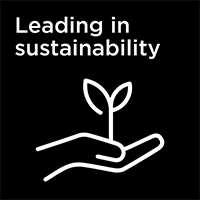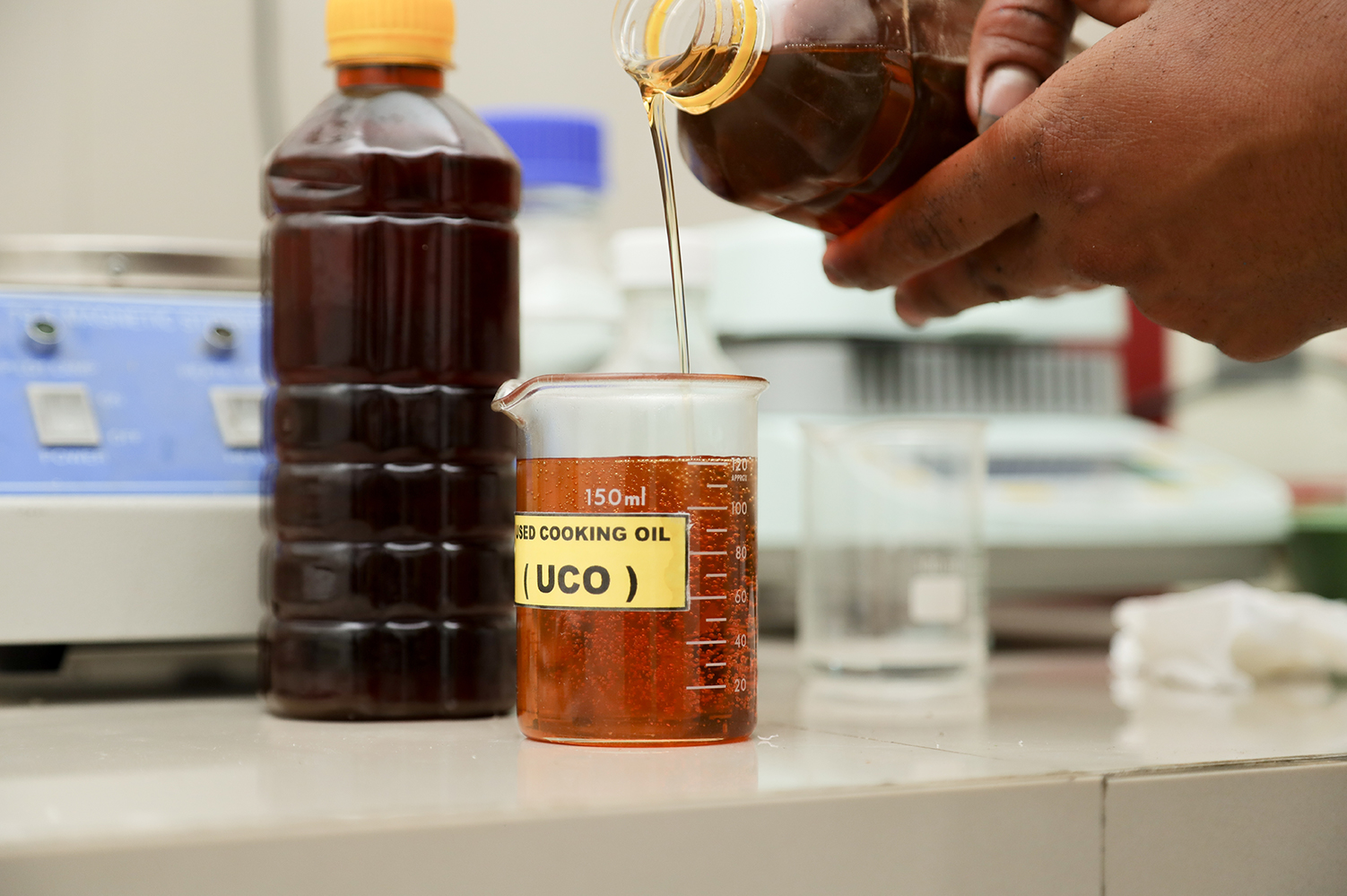Clean fuels
Clariant’s range of next-generation adsorbents help tap into more sustainable feedstocks for renewable fuels.



Delivering on Clariant's purpose »Greater chemistry - between people and planet.«
This story is an example of how Clariant delivers on its purpose-led strategy.
Is the biofuel industry approaching a feedstock crunch? The question, raised in December of 2022 by the International Energy Agency (IEA), rattles industries and policymakers the world over. That is because such renewable fuels are vital in the fight against climate change. Especially when made from waste products or agricultural residues they have the potential to transform transportation, particularly in areas that are hard to electrify such as trucking, shipping and aviation. Demand for sustainable biofuels is projected to grow significantly, notably due to legislative targets and incentives. If demand were to outstrip supply, that could spell trouble, especially for feedstocks such as used cooking oils (UCOs). Clariant's next generation of adsorbents can help alleviate the problem by allowing producers of biodiesel, renewable diesel and sustainable aviation fuel (SAF) to tap into an ever-wider range of sustainable feedstocks.
Nearly tenfold growth
Biofuels are a global success story. Since 2000, production worldwide has increased roughly tenfold to about 175 billion liters per year, replacing ever more fossil fuels in transportation. And the ramp-up continues: According to recent IEA estimates, total annual biofuel demand will increase by about 35 billion liters between 2020 and 2027. For sustainable aviation fuel the IEA’s conservative estimate is an eightfold increase. During that same period, demand for vegetable oils, waste, and residue oils and fats to make biodiesel and renewable diesel will increase by 56%. »The feedstock market is already stretched to its limits,« says Carlos Rodríguez, Head of Product Management & Technical Sales Purification EMEA, Adsorbents & Additives. »This forces producers to use lower qualities than their facility designs allow, adding considerable stress to their units.«
Not all biofuels are created equal. Both biodiesel and renewable diesel are made from bio-based sources such as vegetable oils or animal fats. Burning these releases only carbon that was previously taken out of the atmosphere. In the case of renewable diesel, this cycle can reduce the release of greenhouse gas emissions by up to 80% compared to conventional diesel – always depending on the raw materials used to make the fuel.
»Compared to virgin vegetable oils, alternative feedstocks contain more and a much wider range of contaminants which need to be removed.«
Vinicius Ribeiro Celinski, Head of R&D and BD Purification, Adsorbents & Additives

A more sustainable path
Making renewable diesel or biodiesel from virgin vegetable oils is straightforward and can be sustainable. But it has its drawbacks: Producing vast amounts of virgin vegetable oil requires intensive agriculture and uses large areas of arable land, water, and other natural resources that could otherwise be used for food production. This could lead to even more deforestation and exacerbate food crises. A much more sustainable path is to use waste and residue oils and fats. These neither take up additional resources nor do they compete with food production. That is why regulators and markets are pursuing the shift from virgin oils to so-called second-generation and advanced feedstocks made from used cooking oils (UCOs), waste animal fats, and palm oil mill effluents (POMEs). For example, both the EU's Fit for 55 package and the revised Renewable Energy Directive (RED III) clearly favor these waste feedstocks, alongside advanced biofuels produced from agricultural or forestry residues.
»However, compared to virgin vegetable oils, these alternative feedstocks contain more and a much wider range of contaminants,« explains Dr. Vinicius Ribeiro Celinski, Head of R&D and BD Purification, Adsorbents & Additives. »We find compounds containing metals like magnesium or calcium and also phosphorus, which can lead to catalyst poisoning. These are distinct from the ones found in virgin oil and require highly advanced adsorbents with unique binding abilities. Additionally, you need to deal with impurities like soaps, phosphatides, or chlorine that are prevalent in certain waste oils.« This new level and the variety of contamination can gum up the production process – sometimes quite literally – significantly affecting throughput and yields.

Effectively removing contaminants
Clariant's solution comes in the form of its Tonsil™ RNF series of highly effective adsorbents and refining aids. These porous silicates are widely used in the purification of edible oils in about 130 countries across the globe. An outstanding property is their large reactive surface area. A single gram of Clariant's products has a surface area of more than 200 square meters – about half the size of a basketball court. This large reactive area, together with Clariant's proprietary treatment, makes the Tonsil™ RNF series so effective in removing contaminants both in the pre-treatment of feedstocks and the post-treatment or »polishing« of biodiesel to meet the required specifications.
»Tonsil™ not only reduces this adsorbent dosage and the associated cost but also increases plant throughput and helps to minimize oil retention in the cake.«
Carlos Rodriguez, Head of Product Management & Technical Sales Purification EMEA, Adsorbents & Additives

35% shorter filtration times
What makes Clariant's latest generation of adsorbents especially useful to producers is how they increase throughputs during filtering: »The filter is one of the most critical sections of a pre-treatment unit and a bottleneck for most operations,« says Jorge Herrero, Technical Support Manager Purification EMEA. »Since a filter cake is formed with the adsorbent, its quality and development are critical. A stable and especially homogenous filtration ensures that contaminant removal is spread across the entire filter cake.« That is where Clariant's next-generation adsorbents come in, especially Clariant's Tonsil™ RNF 919X FF and its newly launched Tonsil™ RNF 719X FF series. Recent lab tests have shown roughly 35% shorter filtration times with Clariant's new adsorbents compared with past generations.
Using advanced adsorbents boosts productivity. It also cuts costs, not only by prolonging catalyst lifecycles. »The complex contaminant profile and the higher level of contaminants found in alternative feedstocks call for drastically higher adsorbent dosing,« says Carlos Rodríguez. »As a highly activated and selective adsorbent, Tonsil™ not only reduces this adsorbent dosage and the associated cost but also increases plant throughput and helps to minimize oil retention in the cake.« Plus, as a multipurpose system, Clariant's Tonsil™ range offers the necessary flexibility, which is crucial to adopting an ever-wider range of waste feedstocks that further reduce greenhouse gases and our dependency on fossil fuels. All the more reason why adsorbents will play a central role in the next chapter of bio- and renewable fuel's success.
By partnering with Clariant, producers gain access to a global network comprising 28 production sites, efficient logistics, and dedicated technical support. This ensures a dependable supply of specialty adsorbents and hands-on assistance to meet the rising demand.
Renewable diesel vs. biodiesel
Renewable diesel and biodiesel are often confused. They are both made from renewable, organic feedstocks such as vegetable oil or animal fat. Yet they are two very different products. Traditional biodiesel (also known as Fatty Acid Methyl Ester or FAME) differs substantially from »petrodiesel« made from crude oil. That is why standard diesel engines only take it added as a blend (usually less than 10%) in conventional diesel. In contrast, renewable diesel, also known as hydro-treated vegetable oil or HVO, is a true hydrocarbon, meaning it has a much more similar chemical composition to petrodiesel. It can thus power conventional engines directly.
Using waste feedstocks such as used cooking oil to produce renewable diesel requires extensive pre-treatment. The resulting diesel, however, is already pure and stable. Biodiesel meanwhile needs less pre-treatment of feedstock, but considerably more post-treatment to remove contaminants such as free glycerin, excess alcohol, or high levels of acidity. It is also generally less stable than renewable diesel.
According to the IEA, most new governmental policies favor renewable diesel over biodiesel, and most investment today goes into new HVO plants.

